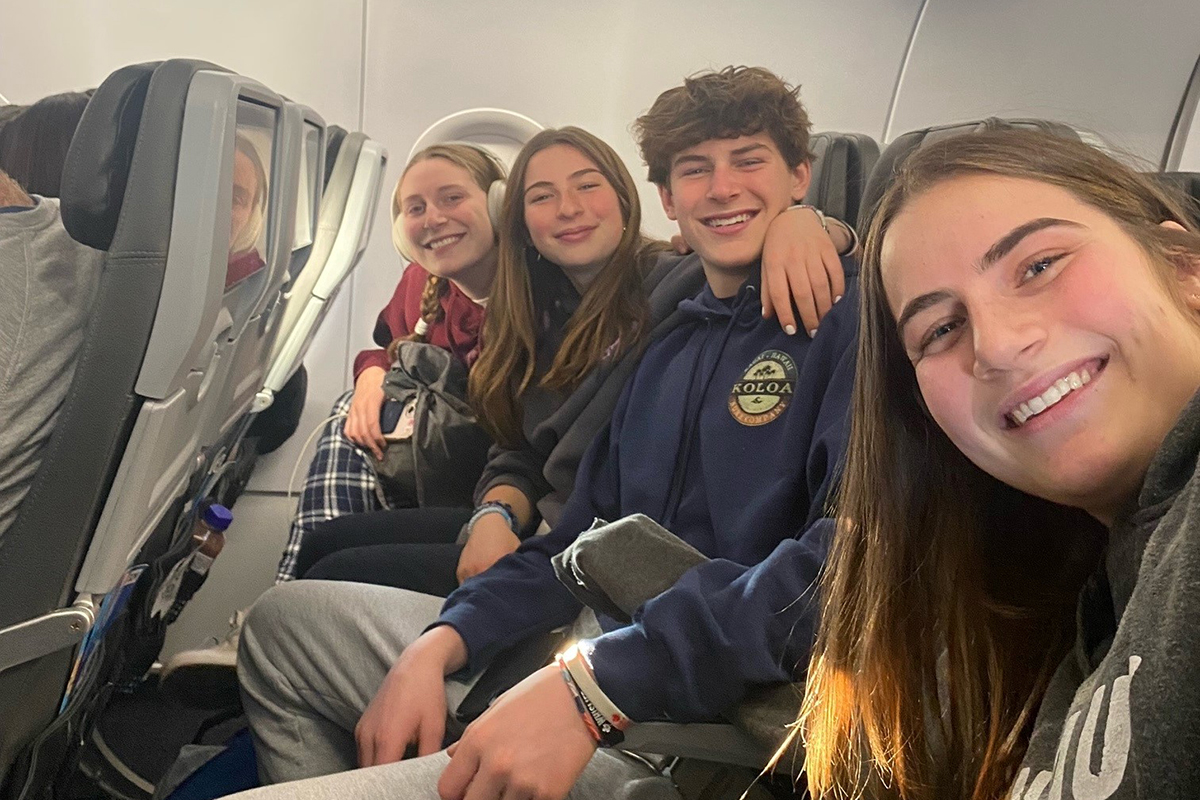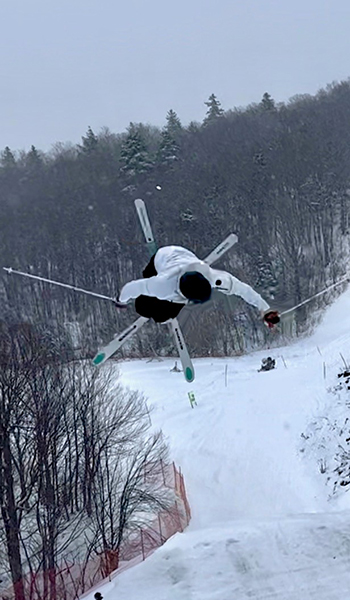-
Services
Featured Specialties
-
Locations
Location Type
-
Patients & Visitors
Published February 02, 2024


Ean Frankel, 15, of Westport, CT was attending his first year at Stratton Mountain School, a boarding school that prepares students for competitive winter sports, when a normal fall caused hidden life-threatening injuries. “I was excited to attend this school because skiing allows me to truly focus and be present. I love being able to reach my potential in this sport,” said Ean.
A few months into his first year Ean was training with his team when he fell on his stomach after a jump. “I wasn’t going very fast, but I took a blow to the abdomen that knocked the wind out of me. I figured I would be fine after a little rest,” said Ean.
However, Ean couldn’t stand up after that fall, and the ski patrol took him to the mountain clinic. Lucky for Ean, his coach knew that he should be evaluated for internal bleeding. Ean was transferred to a hospital in Albany for further evaluation.
“I was told to wait it out and rest – but the pain was unrelenting and because of my coach’s advocacy we still had internal bleeding as a concern,” said Ean who had made the journey home to his parent’s house in Westport where they took him to Yale New Haven Children’s Hospital (YNHCH) at the advice of his pediatrician.
At YNHCH scans showed that Ean suffered a Grade 5 splenic laceration. The spleen is a small organ inside the left rib cage. The spleen stores and filters blood and makes white blood cells to fight infection. A ruptured spleen can be fatal.
“Ean had multiple parenchymal splenic pseudoaneurysms," said Todd Schlachter, MD, interventional radiologist, YNHCH. “This occurs when the blood vessel wall is injured, and the blood leaking from the vessel is contained within the surrounding tissue. This is a medical emergency because the vessel could split open and rupture at any time – so Ean was basically a ticking time bomb even though he looked fine in every other sense.”
There are a few approaches to treating this kind of injury, depending on the patient's specific needs. One option is an open surgical procedure, which is a major invasive procedure but sometimes necessary.
“Internal injuries should be evaluated in a level 1 trauma center, such as Yale New Haven Children's Hospital, to ensure the full spectrum of care and a highly experienced team is available,” said Dr. Schlachter.
In Ean's case, the Interventional Radiology team used image-guided, minimally invasive techniques to avoid major surgery. Ean underwent deep sedation for the procedure, and his personality shined through when he asked if he could help the clinical team just before the anesthesia kicked in. Dr. Schlachter and his team expertly guided a slender catheter and wire into Ean's splenic artery using minimally invasive image-guided techniques.
The team successfully reached the damaged arteries within the spleen and deployed several occlusion devices. The meticulous execution of this minimally invasive procedure preserved 90% of Ean's spleen. It also enabled Ean to be discharged from the hospital the same day with only a band-aid, no stitches, and no scar.
“My school is known for rigorous training – it is a ton of work, and it was made very clear to me that I could not participate until I made a full recovery,” said Ean.
As hard as it was for this athlete to rest, Ean complied by focusing on school, spending time with his three sisters, and playing piano.
Dr. Schlachter emphasizes the importance of knowing when to be evaluated.
"Fortunately, Ean's coach understood how to advocate for his student and get him evaluated by a medical professional. Children frequently injure themselves and recover without incident. Still, it is critical to recognize that if a child complains of persistent or acute abdominal pain while participating in a contact sport, they should be evaluated by a medical professional," said Dr. Schlachter.
"While this was not Ean's case, an enlarged spleen for whatever reason, such as Mono or Mononucleosis (caused by the Epstein-Barr virus), is more prone to rupture. As a doctor, parent, and coach, I always keep in mind that a minor, incidental injury to an enlarged spleen can lead to rupture, turning into a serious medical event for that child. "
Signs of internal injury include:
Six weeks later Ean went back to boarding school and returned to skiing with a new mentality. “This is a guide of what could happen if I am not careful. I am fully recovered, and I am putting this behind me – I couldn’t be more excited to make up for lost time – but my sense of calculated risk is much more refined.”
Most importantly, Ean shares his experience with classmates so they know when to seek help.